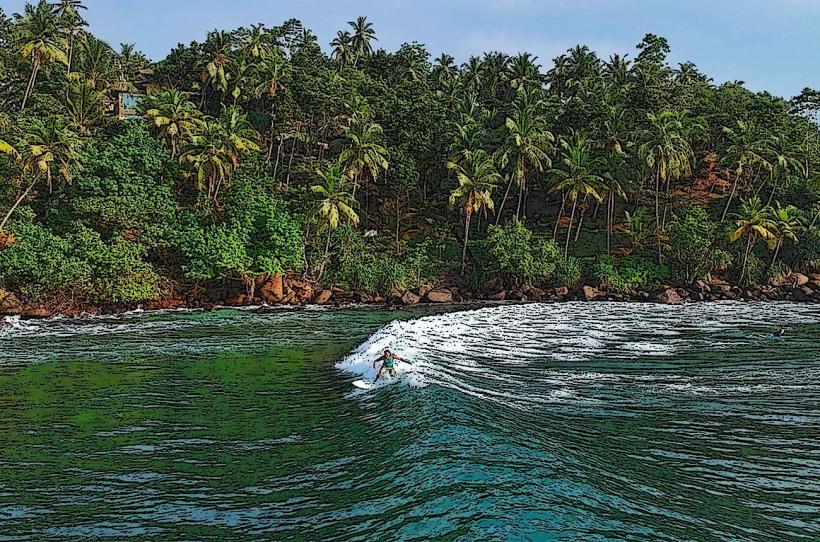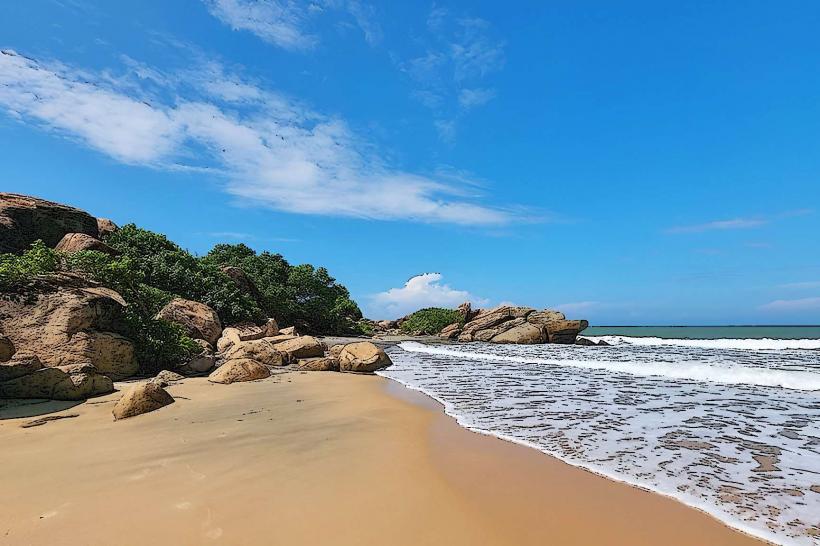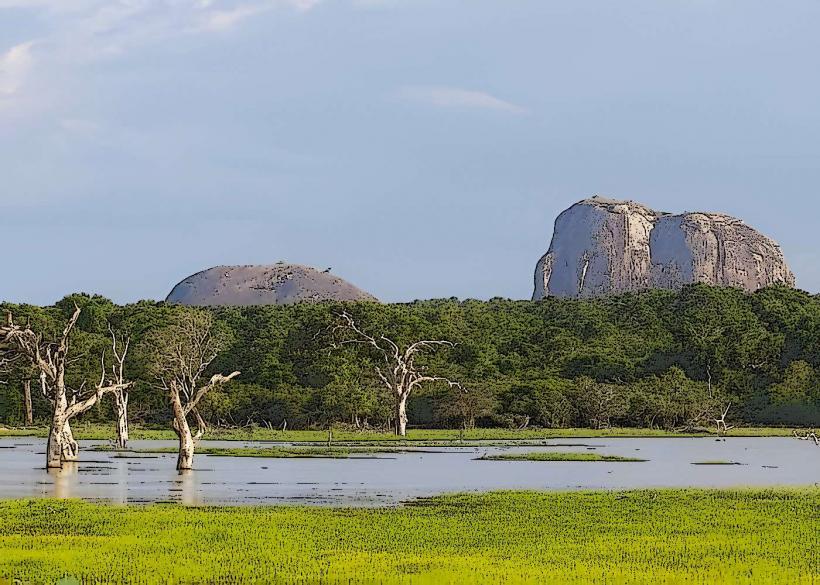Information
Landmark: Crocodile RockCity: Arugam Bay
Country: Sri Lanka
Continent: Asia
Crocodile Rock is a popular and unique geological formation located in the eastern part of Sri Lanka, near Batticaloa. Known for its distinct shape, the rock is often named for its resemblance to a crocodile when viewed from certain angles. It is a favorite spot for tourists and locals alike, combining both natural beauty and the opportunity for exploration and adventure.
1. Overview
- Location: Crocodile Rock is situated in the eastern coastal region of Sri Lanka, around 12 kilometers from Batticaloa town. The rock formation is found near the Batticaloa Lagoon and is easily accessible via local roads.
- Name Origin: The name “Crocodile Rock” comes from the rock’s distinctive appearance, which resembles the shape of a crocodile, especially when viewed from certain vantage points. The flat top of the rock and its elongated shape contribute to this resemblance.
- Geological Significance: As a natural rock formation, Crocodile Rock stands out for its size and shape, making it a noteworthy geological feature in the area.
2. Features of Crocodile Rock
Shape and Size
- The most striking feature of Crocodile Rock is its shape, which, as mentioned, resembles the body of a crocodile. From a distance, the rock appears to have a large, flat head and a long, narrow tail, creating a natural illusion of a crocodile lounging on the ground.
- The rock is relatively large and prominent, making it easy to spot from various points in the surrounding area, especially near the coastline or from boats traveling along the Batticaloa Lagoon.
Scenic Views
- The area around Crocodile Rock offers breathtaking views of the Lagoon and the surrounding natural landscapes, including palm trees, lush vegetation, and the ocean.
- The rock formation provides a high vantage point, offering visitors a chance to take in panoramic views of the surrounding region, especially during sunrise or sunset, when the lighting conditions are ideal for photography.
3. Activities at Crocodile Rock
Photography
- The unique shape of the rock makes it a photographer’s paradise. Whether you’re capturing the rock itself, the surrounding natural beauty, or the sunset over the Batticaloa Lagoon, there are plenty of opportunities to take stunning photos.
- Visitors often take photographs from multiple angles to capture the best likeness of the “crocodile” shape, with the surrounding lagoon and coastal scenery providing an idyllic backdrop.
Hiking and Exploration
- Crocodile Rock is a great spot for exploration and light hiking. Visitors can climb to the top of the rock formation for a closer look at its geological structure and enjoy the panoramic views of the area.
- The surrounding area also offers opportunities for nature walks and exploration of the coastal and lagoon ecosystems.
Relaxing and Picnic
- The rock and its surroundings provide a peaceful and tranquil environment, ideal for those looking to relax and enjoy nature. Visitors often bring picnic items to enjoy the outdoors, surrounded by the beauty of the lagoon and the natural landscape.
4. Access and Transportation
- Getting There: Crocodile Rock is located a short distance from Batticaloa town. Visitors can reach the rock by car or tuk-tuk. The roads leading to the area are well-maintained, making the rock easily accessible to tourists.
- Public Transportation: While public transportation may be available in the area, a taxi or private transport is recommended for a more direct and comfortable route to the rock.
5. Best Time to Visit
- Ideal Visiting Season: The best time to visit Crocodile Rock is during the dry season, from April to October, when the weather is sunny and conducive for outdoor activities such as hiking and photography. The clear skies and calm conditions make for the best views.
- Monsoon Season: During the northeast monsoon (from November to March), the weather can be rainy and unpredictable, which might make access to the rock and surrounding areas less enjoyable.
6. Nearby Attractions
- Batticaloa Lagoon: The Batticaloa Lagoon is a key attraction in the region, and it can be explored by boat, kayak, or on foot. The lagoon is rich in biodiversity and provides an excellent spot for birdwatching and photography.
- Kallady Beach: Located nearby, Kallady Beach offers a peaceful, uncrowded environment perfect for swimming, sunbathing, or relaxing by the ocean.
- Batticaloa Fort: This colonial-era fort is located in Batticaloa town and provides insight into Sri Lanka’s history. It’s a popular spot for tourists visiting the area.
- Peanut Farm Beach: Another nearby beach, known for its peaceful and quiet atmosphere, is Peanut Farm Beach, perfect for relaxation after visiting Crocodile Rock.
7. Conclusion
Crocodile Rock is a fascinating natural landmark in Batticaloa, offering a combination of unique geological features, stunning views, and opportunities for exploration. Whether you’re interested in photography, hiking, or simply enjoying the surrounding beauty, Crocodile Rock is a great spot for those visiting the eastern region of Sri Lanka. Its tranquil environment and distinctive shape make it a memorable experience for anyone seeking to connect with nature while exploring Sri Lanka’s coastline.




